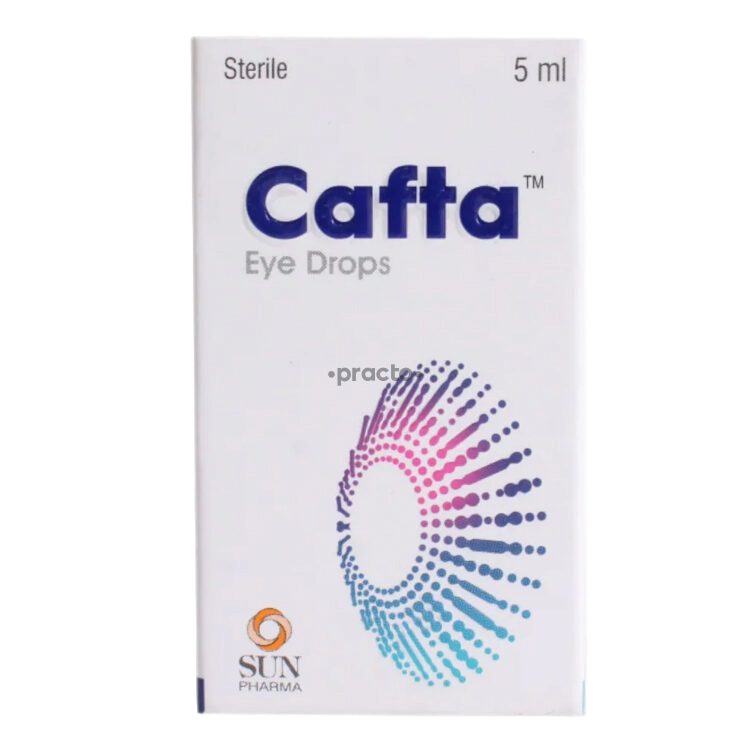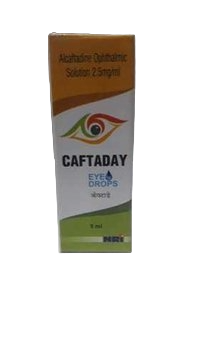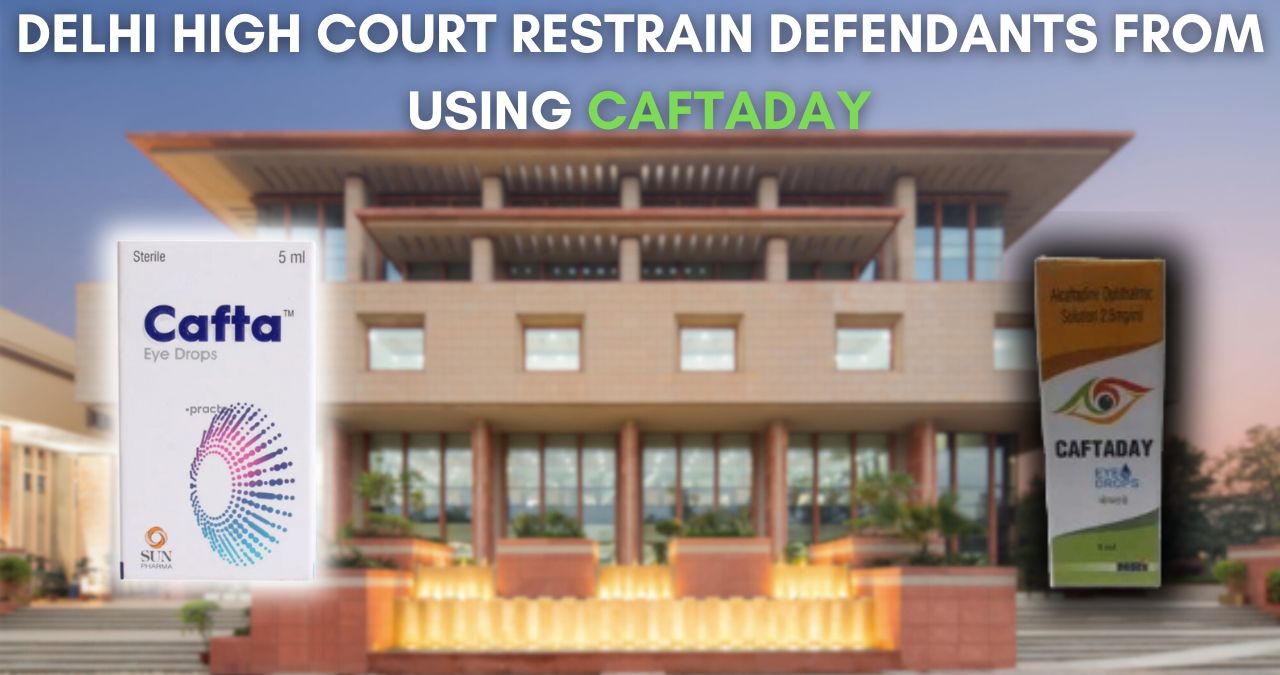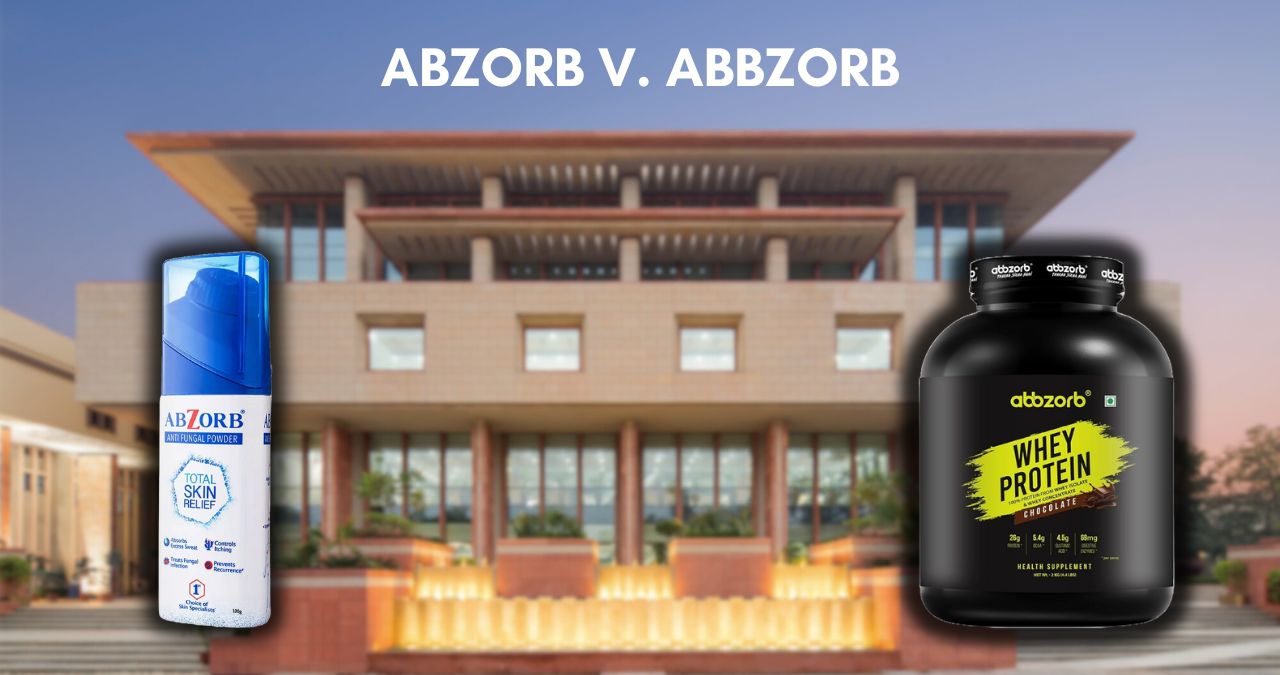The Hon’ble Delhi High Court injuncted Defendants from dealing in medicinal preparation with the mark CAFTADAY or any mark which is deceptively similar to the Plaintiff’s mark CAFTA.
Why suit was filed?
Suit was filed seeking a decree of permanent injunction restraining defendants from dealing with the mark CAFTADAY or any other mark deceptively similar to Plaintiff’s trade mark CAFTA.
| Case Details | Sun Pharma Laboratories Ltd. v. Narender Kumar & Ors., CS (COMM) 424/2021 |
| Nature of Case | Passing off |
| Plaintiff’s mark | Cafta (medicinal eye drop containing the compound ALCAFTADINE |
| Defendant’s mark | Caftaday (medicinal eye drop containing the compound ALCAFTADINE) |
Product Comparison:
| Plaintiff’s Product | Defendant’s Product |
 |  |
Defendant’s arguments:
- Plaintiff’s and Defendant’s products are medicinal eye drop having same compound, i.e., ALCAFTADINE.
- The WHO listed ALCATADINE as an INN preparation.
- Plaintiff did not coin the word CAFTA, but essentially took it from the INN ‘ALCAFTADINE’.
- Reliance was placed on Section 13 of the Trade Marks Act, 1999 which prohibits registration of names of chemical elements of INNs.
- CAFTA was a significant and dominant part of ALCAFTADINE and had become publici juris.
- Since medicine would be used for eyes, it is unlikely that a consumer would self-medicate or buy product on mere suggestion of a chemist.
- Various other trade marks using similar generic names such as CAFTADINE, OCUCAFT, CAFTROCARE T, ALCAFT, CAFTYCA, LASTACAFT, etc, exists in the market.
Defendants’ list of cases:
| Schering Corporation & Ors. v. Alkem Laboratories Ltd., 2009 SCC OnLine Del 3886 | It is a common practice to name a drug on the basis of the name of the active chemical compound or salt, or the disease it seeks to remedy, or the organ it intends to treat. The name of such ingredient or compound, being in the public domain and of a generic nature, cannot be claimed by anyone for exclusive use as their trademark |
| Orchid Chemicals and Pharmaceuticals Ltd. v. Wockhardt, 2013 SCC OnLine Mad 1324 | Use of generic terms is common and unavoidable and such names have come to be identified with a class or category of goods and service by the public at large and can, therefore, be called generic. |
Plaintiff’s arguments:
- Objection u/s 13 of the Trade Marks Act, was not raised in the written statement. Moreover, since the Plaintiff’s mark was not registered, therefore, Section 13 defence cannot be raised in the present case.
- Only two eye drops containing the salt ALCAFTADINE viz. ALCAFT and ALCAREX were found in the market, wherein the same were not using substantial part of the same salt.
- Plaintiff was prior user of the trade mark CAFTA since 2019 while Defendant’s earliest trade mark application is on 2021 on a proposed to be used basis.
- Defendants are estopped from claiming lack of distinctiveness in the word CAFTA considering that defendants had themselves applied for registration of the mark CAFTADAY.
- Plaintiff garnered immense goodwill in the said product and has annual sales of over Rs. 97.67 laks in 2019-2020 and Rs. 176.33 lakhs in 2020-2021. Therefore, there is a strong case for passing off.
- All three tests for passing off i.e., prior and continuous user, goodwill and reputation and deceptively confusing trade mark are satisfied.
Plaintiffs’ list of cases:
| Ajanta Pharma Ltd. v. Sunways (India Pvt. Ltd.), Suit No. 235 of 2015 – Bombay HC | The registered trademark “GATE” and other variations were not deceptively similar to INN “GATIFLOXACIN” and that the suffix “-FLOXACIN” was prominent and emphatic and made the INN dissimilar |
| Cadila Healthcare v. Cadila Pharmaceuticals, 2001 SCC OnLine SC 578 | The threshold of deceptive similarity is lower in cases involving pharmaceutical drugs. Confusion between two products could be severely harmful and fatal, particularly considering that the doctor’s handwriting can be illegible and will cause confusion. |
| Corn Products Refining v. Shangrila Food Products Ltd., AIR 1960 SC 142 | The question of similarity had to be approached from the point of view of a man of average intelligence and imperfect recollection |
| Radico Khaitan Ltd. v. m/S Devons Modern Breweries Ltd., 2019 SCC OnLine Del 7483 | Defendants had failed to discharge its duty of due diligence and had not conducted a search in the Trade Marks Registry |
| Mankind Pharma v. Nova Kind Biosciences Private Limited, 2023 SCC OnLine Del 4806 | In the peculiar circumstances of India, where the poor are unable to afford services of a physician, they are provided drugs by the dispensing chemist and are likely to get confused into believing that drugs manufactured by the defendants are those of the plaintiff owing to a common suffix. |
| Nutrica Pusti Healthcare Pvt. Ltd. and Ors. v. Morepen Laboratories, 2021 SCC OnLine Del 2631 | The differences in packaging etc. between two compared products would be useful for general goods like soaps and detergents but not for medicines. |
Defendant’s cases distinguished by the Plaintiff:
| Schering Corporation & Ors. v. Alkem Laboratories Ltd., 2009 SCC OnLine Del 3886 | There was evidence in Schering case that TEMO was an abbreviation for TAMOZOLOMIDE, there was no evidence that CAFTA was an abbreviation of ALCAFTADINE. Injunction was refused in the cited case because the price difference between the competing products were of 600%. Present case – the prices are similar. |
| Orchid Chemicals and Pharmaceuticals Ltd. v. Wockhardt, 2013 SCC OnLine Mad 1324 | Injunction was refused in the cited case since appellant was claiming a right in the prefix, was not able to show that it was subsequent proprietor of the mark and was not able to justify the delay of two years in approaching the Court. In the present case – Plaintiff was not claiming any right in the prefix of ALCAFTADINE and no other medicine have been brought to attention of court which starts with the prefix CAFTA. |
Judgment:
Reasoning:
- In a case of passing off, plaintiff is essentially required to establish three things, i.e., volume of sales and extent of advertisement, misrepresentation by the defendant to the public, and finally, loss or the likelihood of it.
- Volume of Sales: First element established in the light of the CA Certificate appended with the Plaint.
- Misrepresentation: Plaintiff’s mark CAFTA completely subsumed by the impugned mark CAFTADAY. The deceptive similarity between the mark CAFTA and CAFTADAY is writ large as the former has been entirely subsumed by the latter.
Defendant’s claim of CAFTA becoming publici juris was rebuked. Held that, whether or not a medical term is publici juris is an issue of fact, to be decided at the stage of trial. Furthermore, Defendant failed to produce evidence suggesting that CAFTA is an abbreviation or a term that had become publici juris.
- Plaintiff made out the case of passing off.
Verdict:
Defendants are restrained from dealing in medicinal and pharmaceutical preparations under the impugned mark CAFTADAY or any other mar which may be deceptively similar to Plaintiff’s mark CAFTA.
Cases relied on by the Hon’ble Court:
| Laxmikant V. Patel v. Chetanbhai Shah and Another, (2002) 3 SCC 65 | The law does not permit any one to carry on his business in such a way as would persuade the customers or clients in believing that the goods or services belonging to someone else are his or are associated therewith. It does not matter whether the latter person does so fraudulently or otherwise. |
| Satyam Infoway Ltd. vs. Sifynet Solutions (P) Ltd., (2004) 6 SCC 145 | In a case of passing off, plaintiff is essentially required to establish three things, i.e., volume of sales and extent of advertisement, misrepresentation by the defendant to the public, and finally, loss or the likelihood of it. |
| Intel Corporation vs. Dinakaran & Ors., 2006 SCC Online Del 459 | Though word ARTINTEL is one word while pronouncing the same it gets broken up into two parts ART and INTEL. The mark INTEL of the plaintiff is well known and obviously the use of the word INTEL is with the object of showing some connection with the mark of the plaintiff INTEL and to take advantage of the goodwill and reputation of the plaintiff. |
| Indchemie Health Specialities Pvt. Ltd., Mumbai vs. Naxpar Labs Pt. Ltd.¸ 2001 SCC OnLine Bom 868 | This phonetic similarity taken in conjunction with the fact that there is also a similarity in the products, to our minds, undoubtedly confuse an ordinary purchaser of average intelligence an imperfect recollection and who may even be an illiterate. This is all the more manifest because entire mark of the appellants is incorporated in the mark of the respondents. We have therefore no hesitation in coming to the conclusion that the respondents’ mark Cherish is deceptively similar to the appellants’ mark “Cheri” and is likely to deceive or cause confusion. |
| Dr. Reddy Laboratories v. Reddy Paharmaceuticals, (2004) 29 PTC 435 | The owners of trade marks or copy rights are not expected to run after every infringer and thereby remain involved in litigation at the cost of their business time |
Advocates for the Plaintiff: Mr. Sachin Gupta, Mr. Ajay Kumar, Mr. Manan Mondal, Mr. Rohit Pradhan and Ms. Prashansa Singh
Advocates for the Defendant: Mr. Abhiraj Jayant, Mr. Advait Ghosh and Mr. Mrinal Chaudhry



